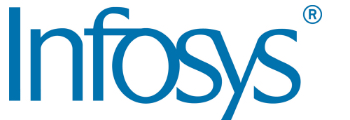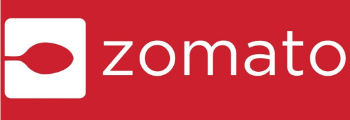
E&ICT Academy, IIT Roorkee
An initiative of Ministry of Electronics and Information Technology (MeitY) Govt. of India
Batch Starts
Duration
Format
Projects
Certificate
Learners

An initiative of Ministry of Electronics and Information Technology (MeitY) Govt. of India
This Data Science and AI Certification Program is an online course. This course covers some of the most trending and latest technologies in the market like Tensorflow 2.0, Generative Adversarial Networks (GANs) etc. The cutting edge content provided through this course will help you launch a career in the field of Data Science
Additionally, this course comes with our cloud lab access to gain the much needed hands-on experience to solve the real-world problems.
Upon successfully completing the course, you will get the certificate from E&ICT Academy, IIT Roorkee which you can use for progressing in your career and finding better opportunities.
Electronics & ICT Academy IIT Roorkee (E&ICT IITR), provides certification courses with emphasis on hands-on learning in basic/advanced topics and emerging technologies in the Electronics and ICT domain. It is sponsored by Ministry of Electronics and Information Technology, Govt. of India. We conduct certification courses/short courses/FDPs in the emerging areas to enrich & upgrade subject knowledge and technical skills benefiting students, working professionals, Govt. employees and Faculty members. The trained beneficiaries are expected to create a cascading effect, transforming the competencies and standards in the parent institutes/organizations. E&ICT courses are at par with QIP for recognition/credits. So far the E&ICT Academy, IIT Roorkee has conducted 150+ courses and trained over 10,000 beneficiaries.
CloudxLab is a team of developers, engineers, and educators passionate about building innovative products to make learning fun, engaging, and for life. We are a highly motivated team who build fresh and lasting learning experiences for our users. Powered by our innovation processes, we provide a gamified environment where learning is fun and constructive. From creative design to intuitive apps we create a seamless learning experience for our users. We upskill engineers in deep tech - make them employable & future-ready.
Churn the mail activity from various individuals in an open source project development team.
Solve various problems using MapReduce and Python.
Sentiment analysis of "Iron Man 3" movie using Hive and visualizing the sentiment data using BI tools such as Tableau.
Write end-to-end Spark application starting from writing code on your local machine to deploying to the cluster.
The logs of a webserver are the gold mines for gaining insights in the user behaviour. So learn to parse the text data stored in logs of a web server using the Apache Spark.
In this project we will build a machine learning model to predict housing prices. We will learn various data manipulation, visualization and cleaning techniques using various libraries of Python like Pandas, Scikit-Learn and Matplotlib.
The MNIST dataset is considered as "Hello World!" of Machine Learning. Write your first classification logic. Starting with Binary Classification learn Multiclass, Multilabel, Multi-output classification and different error analysis techniques.
Build a model that takes a noisy image as an input and outputs the clean image.
Build a model to classify email as spam or ham. First, download examples of spam and ham from Apache SpamAssassin’s public datasets and then train a model to classify email.
The sinking of the RMS Titanic is one of the most infamous shipwrecks in history. In this project, you build a model to predict which passengers survived the tragedy.
This project aims to impart the knowledge of how to access the pre-trained models from TensorFlow 2, and appreciate its powerful classification capacity by making the model predict the class of an input image.
Heroku is a cloud platform for the deployment and management purposes of web applications. You will learn how to deploy DeepLearning based Flask web app on Heroku.
We will train a KNN classifier to predict MNIST images from their noisy version.
Build a CNN from scratch to classify FashionMNIST data using Tensorflow2, Matplotlib and Python.
Learn how to deploy a machine learning model as a web application using the Flask framework.
Create a sentiment analysis model with the IMDB dataset using TensorFlow 2.
Learn how to read a pre-trained TensorFlow model for object detection using OpenCV.
Learn how to access the pre-trained models(here we get pre-trained ResNet model) from Keras of TensorFlow 2 to classify images.
Build a basic neural network to classify if a given image is of cat or not using transfer learning technique with Python and Keras.
Use TensorFlow 2 to generate an image that is an artistic blend of a content image and style image using Neural Style Transfer.
Learn how to over-sample the dataset with imbalanced classes using the SMOTE technique and how to use the thus obtained data to build a fraudulent transaction classifier.
As you know, the Google photos app has stunning automatic features like video making, panorama stitching, collage making, and many more. In this project, we will understand how to make a panorama stitching using OpenCV with Python.
Predict stock market closing prices for a firm using GRU, a state-of-art deep learning algorithm for sequential data, with Keras and Python.
Apply the idea of Transfer Learning to build an image classifier with Tensorflow2, and use it to predict the class of an input image - whether it is a cat or a non-cat.
Use Python and Numpy to build a Logistic Regression Classifier from scratch, and apply it to predict the class of an input image - whether it is a cat or a non-cat.
Use Python and Tensorflow 2 Keras to build a dense deep neural network classifier to predict the classes of flowers in the Iris dataset.
Build a model to classify clothes into various categories in Fashion MNIST dataset.
Identify person from digital image or video.
Project using OpenGym on Reinforcement Learning.
“Sessions were great, pace was also very good. Each of the steps were explained well multiple times to ensure everyone understands the concepts. Thanks Sandeep!”
“Thanks a lot,it was great course! I'm happy that you lead in this path to AI/ML/DL.I hope to continue to collaborate with you in future.”
“Thank you so much Sandeep for all your great sessions. It will help in our career a lot. Your session is very much explanatory and understandable. Kudos to you.Thanks for all your hard work and time. Definitely, we will recommend all our friends and colleagues to attend your different course.Thanks a ton”
“I have been using CloudxLab for a while now, and they are amazing! The best part about using CloudxLab is that you do not need to wait for someone to tell you whether what you did was right or not, it is done automatically on the go. The training materials are of top notch quality. If you get stuck, they have a huge community of trainers and learners to help you out with all your doubts. They have a course structure for everyone, whether you are new to programming or are a seasoned programmer, they have something to offer you. And they are affordable too! I would recommend CloudxLab all the time.”
“This course is suitable for everyone. Me being a product manager had not done hands-on coding since quite some time. Python was completely new to me. However, Sandeep Giri gave us a crash course to Python and then introduced us to Machine Learning. Also, the CloudxLab’s environment was very useful to just log in and start practising coding and playing with things learnt. A good mix of theory and practical exercises and specifically the sequence of starting straight away with a project and then going deeper was a very good way of teaching. I would recommend this course to all.”

“It has been a wonderful learning experience with CXL. This is one of the courses that will probably stay with me for a significant amount of time. The platform provides a unique opportunity to try hands-on simultaneously with the coursework in an almost real-life coding example. Besides, learning to use algebra, tech system and Git is a good refresher for anyone planning to start or stay in technology. The course covers the depth and breadth of ML topics. I specifically like the MNIST example and the depth to which it goes in explaining each and every line of code. Would definitely recommend the instructor-led course.”
“This is one of the best-designed course, very informative and well paced. The killer feature of machine/deep learning coursed from CloudxLab is the live session with access to labs for hands-on practices! With that, it becomes easy following any discourse, even if one misses the live sessions(Read that as me!). Sandeep(course instructor) has loads of patience and his way of explaining things are just remarkable. I might have better comments to add here, once I learn more! Great Jobs guys!”
Senior Software Developer at Decision Resources Group
08 Months Online Program
Applications have already started for this course. You can start the application process by submitting the application form and eligibility quiz. Then our admission committee will take a call on approval and revert back. After making the payment you will get access to the self-paced content, then live classes of Batch will start from 28 March 2021.
The EMI payment starts from April 2021. The monthly EMI payments should be cleared before the 5th of every month. Failure to make the payments will lead to the removal of course access from your account
The content will be a mix of interactive self-paced lectures and live instructor-led training from industry leaders as well as renowned faculty from IIT Roorkee. Linux, Python and Big Data will be provided as self-paced module before the live classes start. Additionally, the program comprises 24*7 support dedicated to solving your academic queries and reinforcing learning. The discussion forum on the CloudxLab website will also facilitate peer-to-peer interactions.
No, we will provide you with the access to our online lab and BootML so that you do not have to install anything on your local machine
Recording of every session will be available just after the class, even if you miss the class you can go through the recording and ask your doubts either on our discussion forum or in the next class.
Someone who has successfully completed this course is expected to be able to solve problems more efficiently using some of the latest technologies in the industry. Learners who have completed this course will be a perfect fit for VLSI, Semiconductor, or similar industries.
Basic knowledge of any programming language and Linux will help you in understanding the concepts faster. We will provide access to our self-paced courses on Python and Linux once you sign up for this course.
You will be required to have at least 60% attendance in live sessions, complete at least 75% of the course content, and complete 1 Capstone Project and 8 Guided projects - Analyse emails from Python, Sentiment Analysis (Hive) from Hadoop, Log Parsing from Spark, 3 mandatory projects from Machine Learning, and 2 mandatory projects from Deep Learning. All the above requirements need to be met within the deadline of the course (11 Months) to be eligible for the certificate from E&ICT Academy, IIT Roorkee.
We understand that you might need course material for a longer duration to make most out of your subscription. You will get lifetime access to the course material so that you can refer to the course material anytime.
Yes, for further details please drop a mail to reachus@cloudxlab.com
Yes, every learner can directly ask their questions and discuss his/her query during any of the class lectures. You can also post your query on our discussion forum.
We provide a 100% fee refund if the request is raised within the first 2 instructor-led sessions. Please contact us at reachus@cloudxlab.com to request a refund within the stipulated time. Thereafter, no refund is provided.




























